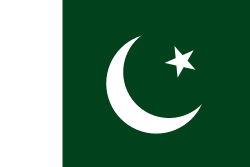This article has multiple issues. Please help improve it or discuss these issues on the talk page . (Learn how and when to remove these messages)
|

Pakistan Vision 2025 is a set of goals for social, economic, security, and governance developments outlined by the government of the Islamic Republic of Pakistan to be achieved by 2025. The overall goal is for Pakistan to become an upper-middle income country by 2025 and to eventually become one of the top ten economies in the world by 2047 (its centennial).